Yong Suk Choi
Balancing Lexical and Semantic Quality in Abstractive Summarization
May 17, 2023Abstract:An important problem of the sequence-to-sequence neural models widely used in abstractive summarization is exposure bias. To alleviate this problem, re-ranking systems have been applied in recent years. Despite some performance improvements, this approach remains underexplored. Previous works have mostly specified the rank through the ROUGE score and aligned candidate summaries, but there can be quite a large gap between the lexical overlap metric and semantic similarity. In this paper, we propose a novel training method in which a re-ranker balances the lexical and semantic quality. We further newly define false positives in ranking and present a strategy to reduce their influence. Experiments on the CNN/DailyMail and XSum datasets show that our method can estimate the meaning of summaries without seriously degrading the lexical aspect. More specifically, it achieves an 89.67 BERTScore on the CNN/DailyMail dataset, reaching new state-of-the-art performance. Our code is publicly available at https://github.com/jeewoo1025/BalSum.
Graph Based Network with Contextualized Representations of Turns in Dialogue
Sep 09, 2021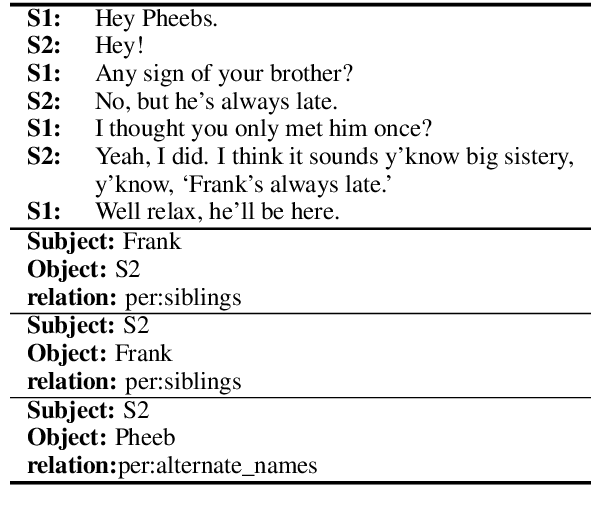
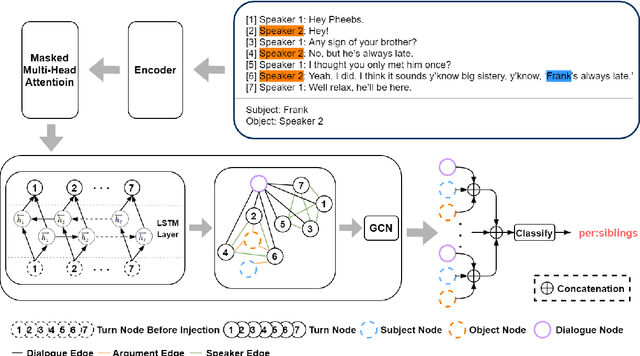
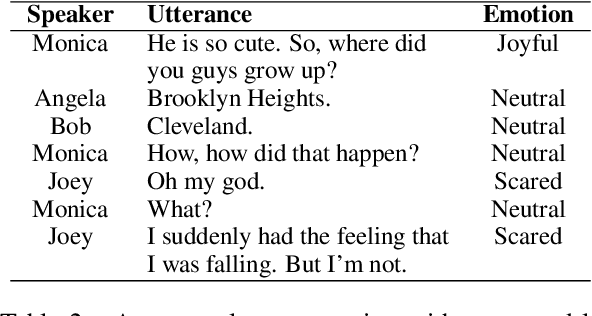

Abstract:Dialogue-based relation extraction (RE) aims to extract relation(s) between two arguments that appear in a dialogue. Because dialogues have the characteristics of high personal pronoun occurrences and low information density, and since most relational facts in dialogues are not supported by any single sentence, dialogue-based relation extraction requires a comprehensive understanding of dialogue. In this paper, we propose the TUrn COntext awaRE Graph Convolutional Network (TUCORE-GCN) modeled by paying attention to the way people understand dialogues. In addition, we propose a novel approach which treats the task of emotion recognition in conversations (ERC) as a dialogue-based RE. Experiments on a dialogue-based RE dataset and three ERC datasets demonstrate that our model is very effective in various dialogue-based natural language understanding tasks. In these experiments, TUCORE-GCN outperforms the state-of-the-art models on most of the benchmark datasets. Our code is available at https://github.com/BlackNoodle/TUCORE-GCN.
Semantic Relation Classification via Bidirectional LSTM Networks with Entity-aware Attention using Latent Entity Typing
Jan 23, 2019
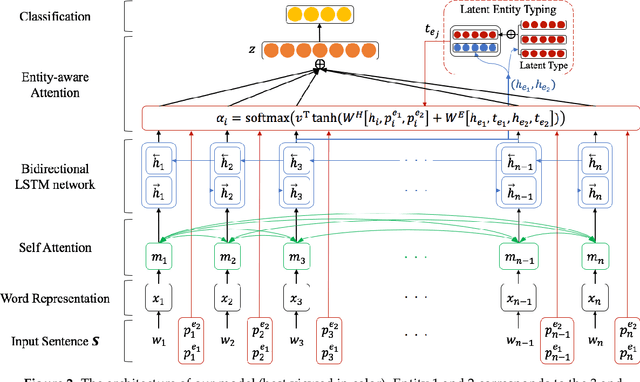
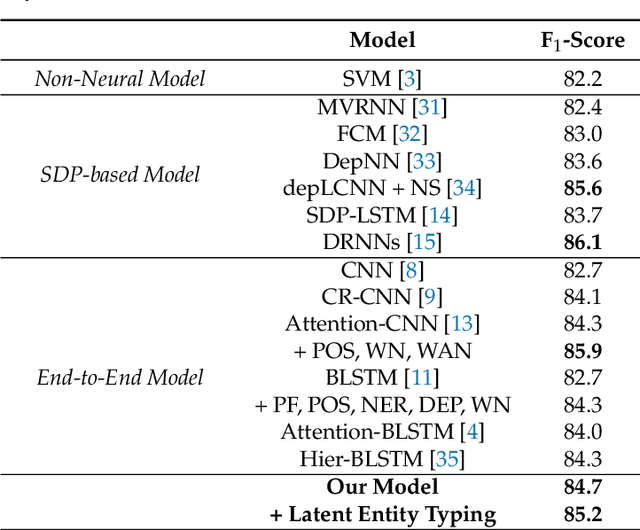
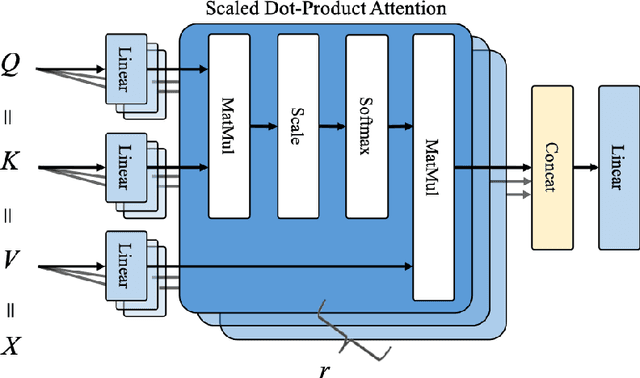
Abstract:Classifying semantic relations between entity pairs in sentences is an important task in Natural Language Processing (NLP). Most previous models for relation classification rely on the high-level lexical and syntactic features obtained by NLP tools such as WordNet, dependency parser, part-of-speech (POS) tagger, and named entity recognizers (NER). In addition, state-of-the-art neural models based on attention mechanisms do not fully utilize information of entity that may be the most crucial features for relation classification. To address these issues, we propose a novel end-to-end recurrent neural model which incorporates an entity-aware attention mechanism with a latent entity typing (LET) method. Our model not only utilizes entities and their latent types as features effectively but also is more interpretable by visualizing attention mechanisms applied to our model and results of LET. Experimental results on the SemEval-2010 Task 8, one of the most popular relation classification task, demonstrate that our model outperforms existing state-of-the-art models without any high-level features.
A Tool for Spatio-Temporal Analysis of Social Anxiety with Twitter Data
Jan 23, 2019

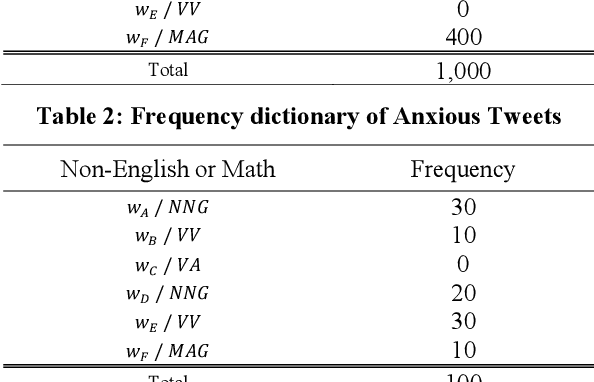
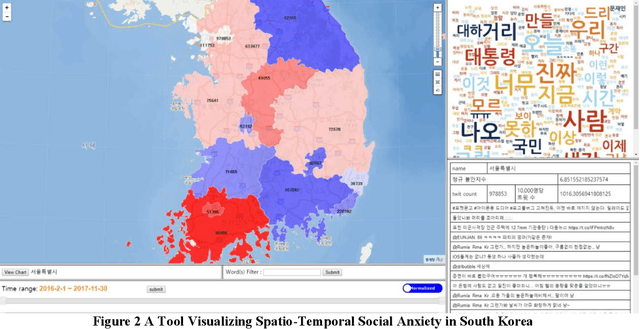
Abstract:In this paper, we present a tool for analyzing spatio-temporal distribution of social anxiety. Twitter, one of the most popular social network services, has been chosen as data source for analysis of social anxiety. Tweets (posted on the Twitter) contain various emotions and thus these individual emotions reflect social atmosphere and public opinion, which are often dependent on spatial and temporal factors. The reason why we choose anxiety among various emotions is that anxiety is very important emotion that is useful for observing and understanding social events of communities. We develop a machine learning based tool to analyze the changes of social atmosphere spatially and temporally. Our tool classifies whether each Tweet contains anxious content or not, and also estimates degree of Tweet anxiety. Furthermore, it also visualizes spatio-temporal distribution of anxiety as a form of web application, which is incorporated with physical map, word cloud, search engine and chart viewer. Our tool is applied to a big tweet data in South Korea to illustrate its usefulness for exploring social atmosphere and public opinion spatio-temporally.
 Add to Chrome
Add to Chrome Add to Firefox
Add to Firefox Add to Edge
Add to Edge